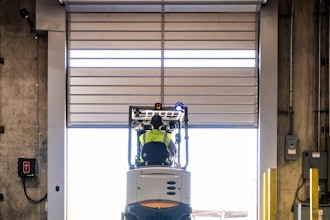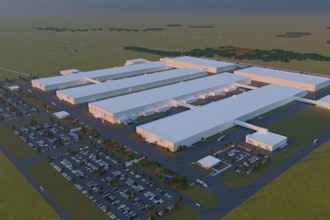
The digital world is undergoing a massive transformation powered by the convergence of two major trends:
- An insatiable demand for real-time insights from data.
- The rapid advancement of Generative artificial intelligence (AI).
Leaders like Amazon, Microsoft, and Google are in a high-stakes race to deploy Generative AI to drive innovation. Bloomberg Intelligence predicts that the Generative AI market will grow at a staggering 42 percent year over year in the next decade, from $40 billion in 2022 to $1.3 trillion. Meanwhile, this computational force is creating a massive surge in energy demand—posing severe consequences for today’s data center operators.
Current power conversion and distribution technologies in the data center can't handle the increase in demand posed by the cloud and machine learning—and certainly not from power-hungry Generative AI applications. The quest for innovative data center solutions has never been more critical, which has led to Gallium Nitride (GaN) semiconductors emerging as a pivotal solution to data center power concerns.
The Rise of Generative AI
Today’s data center infrastructure, designed for conventional workloads, is already limited. Meanwhile, the volume of data worldwide doubles in size every two years—and the data center servers that store this ever-expanding information require vast amounts of energy and water to operate. McKinsey projects that the U.S. alone will see 39 gigawatts of new data center demand, about 32 million homes’ worth, over the next five years.
The energy-intensive nature of generative AI is compounding the data center power predicament. Generative AI applications create significant demand for computing power in two phases: preparing the large language models (LLMs) that form the core of generative AI systems, and then operating the application with these trained LLMs. If you consider that a single Google search has the potential to power a 100W lightbulb for 11 seconds, it’s mind-boggling to think that one ChatGPT AI session consumes 50 to 100 times more energy than a similar Google search.
Data centers are not prepared to handle this incredible surge in energy consumption. While technologies like immersion cooling, AI-driven optimizations, and waste heat utilization have emerged, they offer only partial solutions to the problem.
GaN offers unparalleled performance and efficiency compared to traditional power supply designs, making it an option for today’s data centers—particularly as Generative AI usage escalates. GaN transistors can operate at faster switching speeds and have greater input and output figures-of-merit. These features translate into system benefits that can include higher operating efficiency and increased power density.
In a typical data center environment, each cluster of ten racks powered by GaN transistors can result in a reduction of 100 metric tons of CO2 emissions annually, and a decrease in OPEX expenses. While the benefits of GaN are profound, adoption faces headwinds from the "PUE loophole."
The PUE Loophole
The PUE metric is the standard tool for assessing data center energy efficiency, calculated by dividing the total facility power consumption by the power utilized by IT equipment. The metric helps shape data center operations and guides efforts to reduce energy consumption, operational costs, and environmental impact.
Data center operators continuously strive to monitor and improve the PUE to indicate reduced energy consumption, carbon emissions, and associated costs. However, the PUE metric measures how efficiently power is delivered to servers—yet it omits power conversion efficiency within the server itself. As a result, the PUE calculation does not provide a comprehensive view of the energy efficiency within a data center.
Consider that many servers still use AC/DC converters that are 94 percent efficient or less. While this may sound impressive—10 percent or more of all energy in a data center is lost. This increases costs and CO2 emissions and creates extra waste heat, putting additional demands on cooling systems. GaN is effective in addressing the PUE Loophole. The latest generation of GaN-based server AC/DC converters is 96 percent efficient or better, meaning that more than 50 percent of the wasted energy can be used instead. Across the entire industry, this could translate into more than 37 billion kilowatt-hours saved every year.
GaN can provide an immediately cost-effective way to close the PUE loophole and save high amounts of energy. However, because the PUE doesn’t consider AC/DC conversion efficiency in the server, there is no incentive to make AC/DC converters more efficient.
As the era of generative AI ushers in new applications, the imperative to meet energy demands without compromising sustainability is now paramount. According to Harvard Business Review, “While observers have marveled at the abilities of new generative AI tools such as ChatGPT, BERT, LaMDA, GPT-3, DALL-E-2, MidJourney, and Stable Diffusion, the hidden environmental costs and impact of these models are often overlooked. The development and use of these systems have been hugely energy-intensive and maintaining their physical infrastructure entails power consumption. Right now, these tools are just beginning to gain mainstream traction, but it's reasonable to think that these costs are poised to grow — and dramatically so — soon.”
HBR and other experts cite the severe need for technology suppliers and their users to facilitate change to make AI algorithms greener for broad deployment without harming the environment. GaN, with its efficiency and performance, could be that clear path forward for data centers. By enabling energy conservation, reducing cooling requirements, and enhancing cost- effectiveness, GaN could reshape the data center power landscape.






















